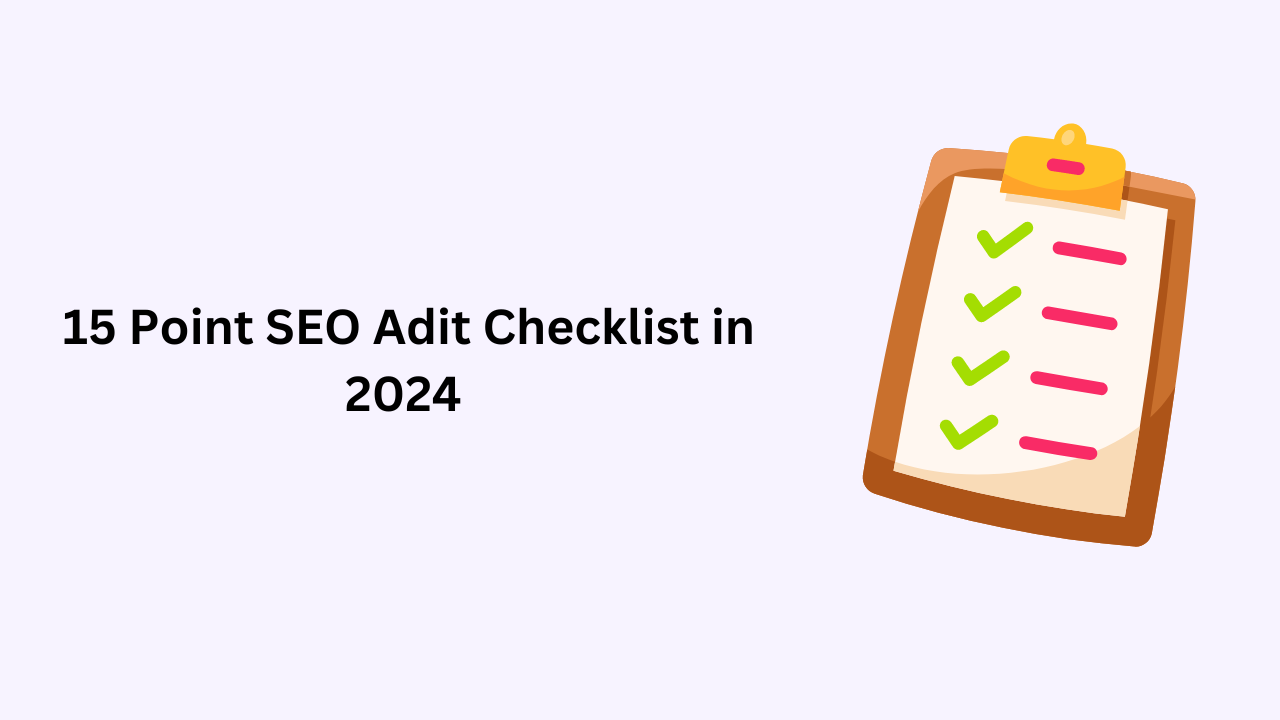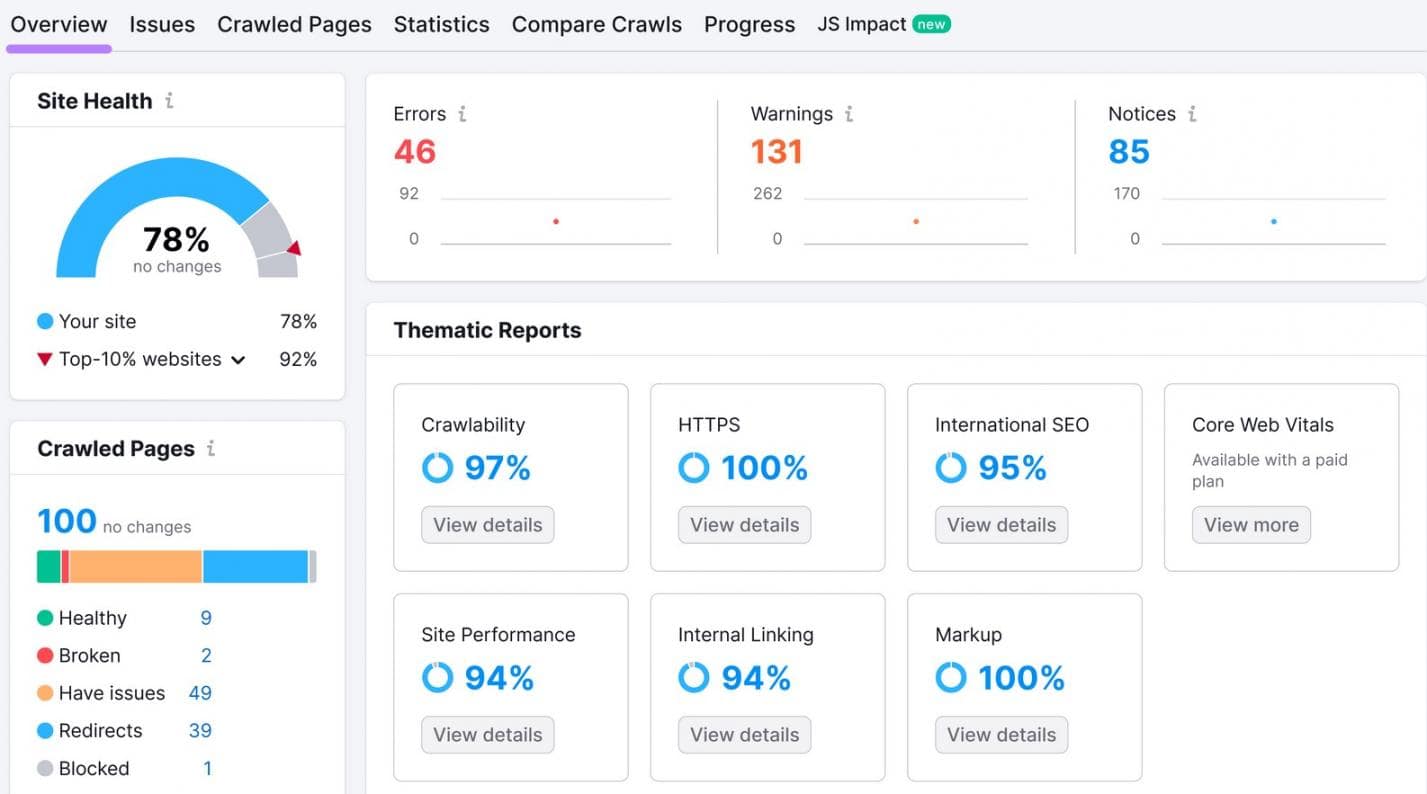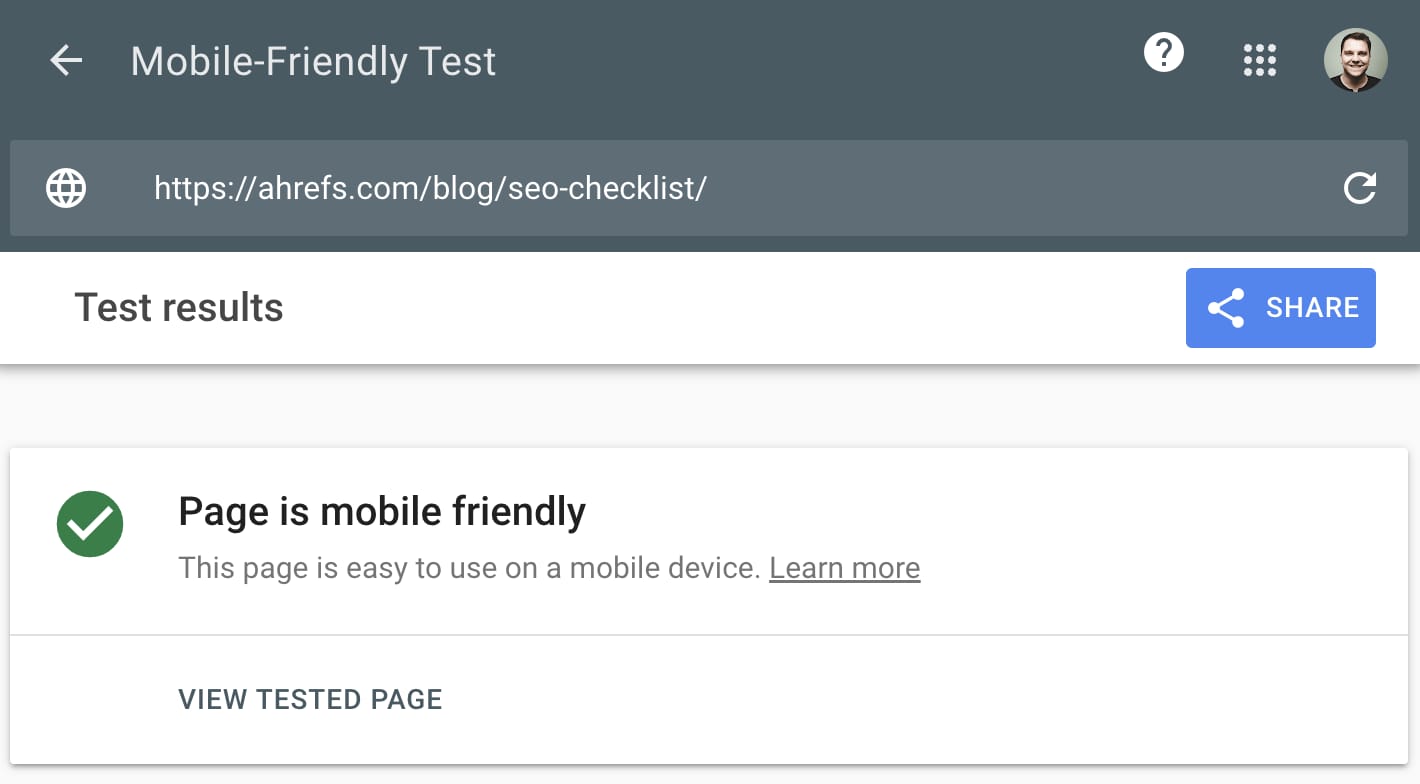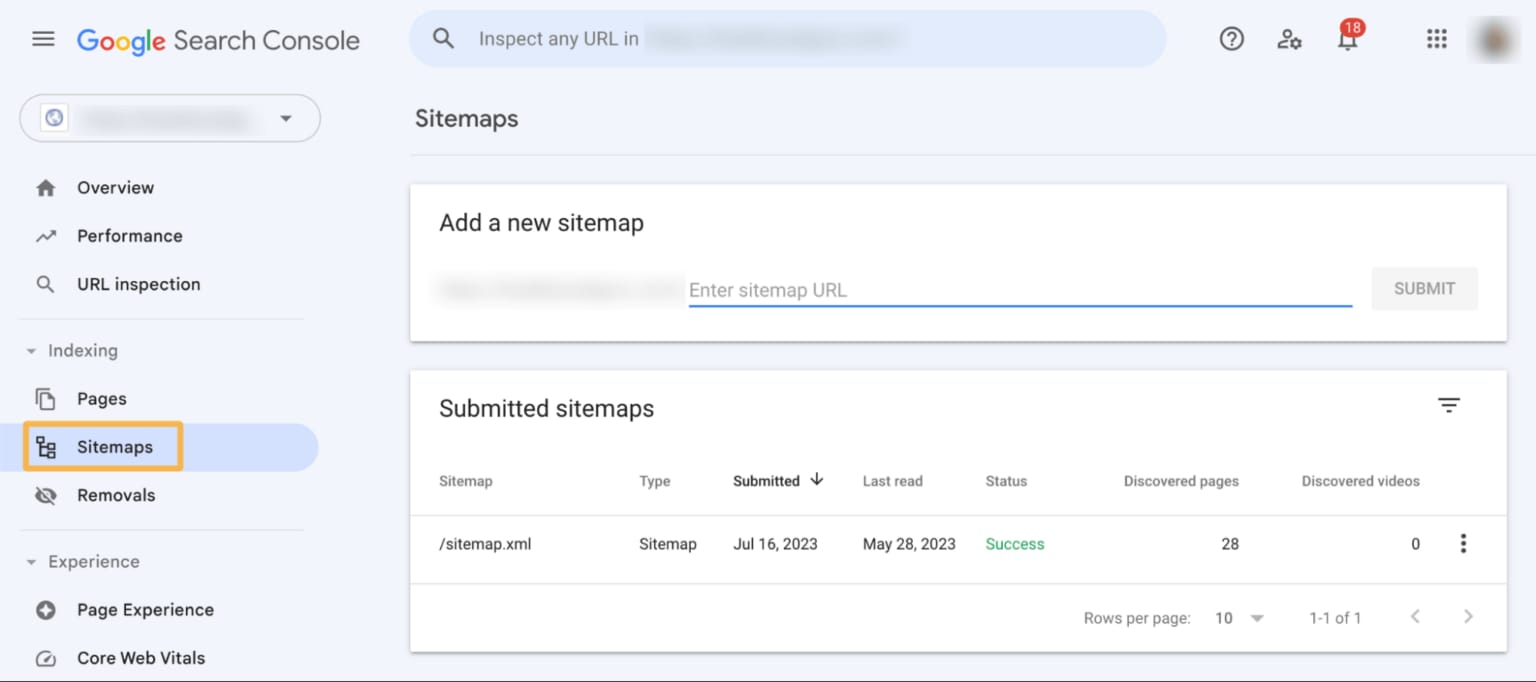When did you audit the site last time? The SEO audit of the site is important as it is an effective way to improve website ranking and optimize search engines.
Additionally, Google algorithm changes frequently, which causes your site visibility to reduce overnight. Moreover, SEO audit checklist works as a rescue here as with audit helps you improve website visibility. Let’s understand in detail what a SEO audit is, 15 checklists, and tools required for it.
What Is An SEO Audit?
It is a process of checking how a website is optimized for search engines. It finds errors that prevent website ranking and opportunities that help improve visibility.
The purpose of an SEO audit is to identify areas of improvement and take corrective actions to improve the search engine ranking of a website. Additionally, it identifies the gaps in website optimizations to improve website ranking and helps businesses stay ahead of competitors by providing insights into competitors’ tactics.
15 Point SEO Audit Checklist in 2025
Are you looking for an SEO audit checklist? The checklist ensures that the website optimizes and ranks your website on search engines. Use this 15-step SEO audit checklist to conduct the audit for the websites.
Run a site crawl
A crawl is a process of using software to automate web pages and index the content to appear on search engines. Also, it helps identify SEO issues that don’t allow websites to rank. It helps in appearing pages in the search engines.
You can use SEO tools like SEMrush and Google Search Console to analyze entire websites.
Identify organic traffic drops
Google is updating its algorithms all the time. The update is targeting quality content and link spam. When there is a traffic drop with significant updates, you get to know which areas need to improve. There are two main reasons for organic traffic drops such as:
- Manual actions
- Google algorithms update
Lets explore them one by one below:
- Manual actions
When black hat practices manipulate the search engine rankings, these tactics violate the Google guidelines known as Google Search Essentials. When Google resorts to such practice, it takes the direct actions of penalties, which impacts website performance. Google notifies about these violations through Manual action reports in Google search consoles.
- Google algorithms update
Google made a core update in March 2024 to focus on helpful content so people find the content useful and click more. After that, they made an update in March 2024 for spam, and again, it made an update for spam on 20 June.
Check for Duplicate versions of your site
When you index your site on search engines, indexing it on one site becomes essential. Because your site can be indexed on websites such as www or http.
If your site runs on various website URLs, indexing, crawling, and ranking become difficult. Google takes them as duplicates, so you need to check them.
You can check duplicates of sites easily. To do so, enter all site versions on the web browser, and it automatically redirects you to the preferred version. If you access through various URLs, use a 301 direct.
Find index issues
When your web page is indexed, it will only rank on search engines. Otherwise, it will not rank. You need to check index issues. You can check index issues through a site audit. Once you understand index issues, solve them.
Check whether your site is mobile-friendly
Do you know that being mobile-friendly has been Google’s ranking factor since 2019? It is a ranking factor as over 95% of the population access the internet through mobile.
To ensure your website is mobile-friendly, go to the mobile usability report in the Google search console. It will tell if any URLs have errors that affect mobile usability. If there is any error, you can correct it.
Analyze your site speed
It is important that your page site loads quickly as it is a ranking factor for a long time. Also, it is a user experience factor according to the data; if the page loads slowly, the bounce rate is higher, while the page loads quickly, the bounce rate is low.
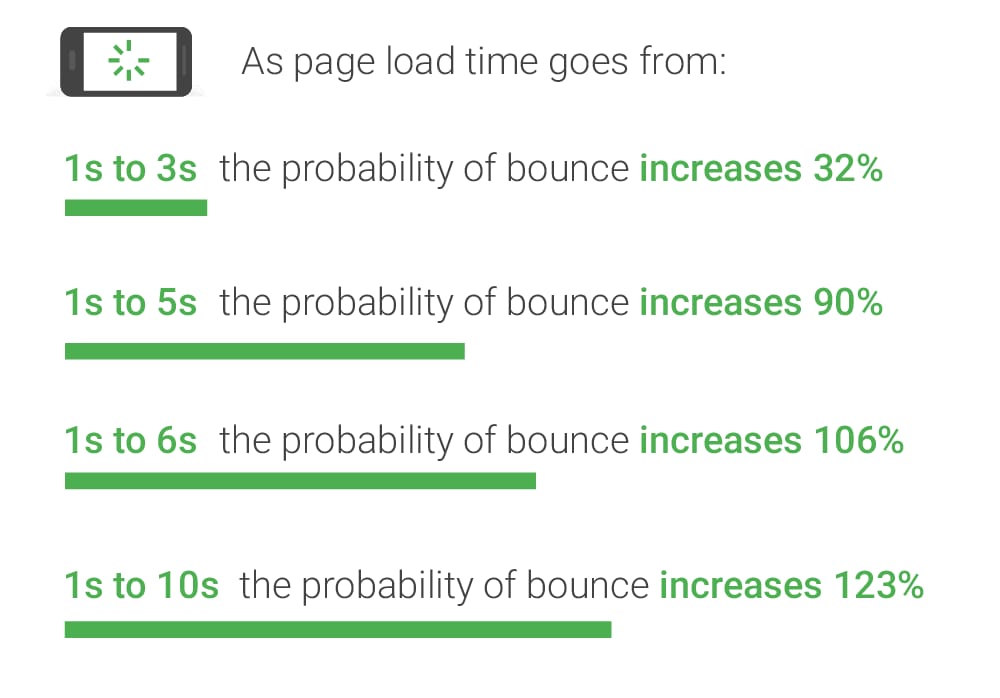 You can check site speed with site performance reports from site audit dashboards.
You can check site speed with site performance reports from site audit dashboards.
Analyze core web vital sources
Do you know Google introduced three metrics in 2020 for page speed and user experience?
The three core web vital sources for analyzing page speed and user experience are as follows:
- Largest contentful paint: Check out how much long it takes to load a large piece of the content.
- First Input Delay: Look into the delay between user’s first interaction with a site page and the browser’s response to the page
- Cumulative layout: Check out how much the page layout shifts the user and their visual stability.
These are core web vitals for ranking factors; check these metrics for pages to be part of the SEO site audit.
Analyze internal linking
Internal link is a process of linking the website page of the same website. It is important as it passes authority, helps users navigate the sites, and helps search understand the site.
The following is an example of an internal link
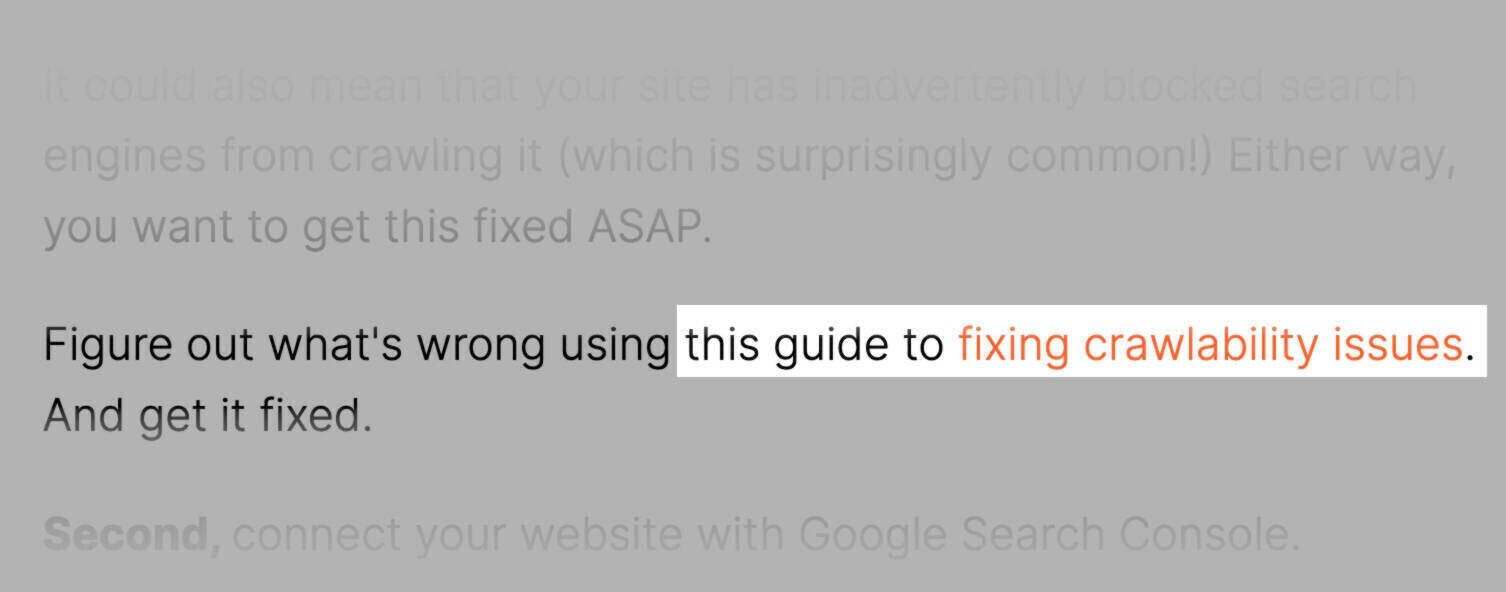
Detect broken pages
The broken page on the site is not helpful; also, if there are backlinks, it is wasted. This makes it important for you to check broken pages with backlinks in Site Explorer.
To check backlinks, enter the domain in Site Explorer, go to Best by Links and add 404, not find filters. After sorting the report, refer to domains from high to low.
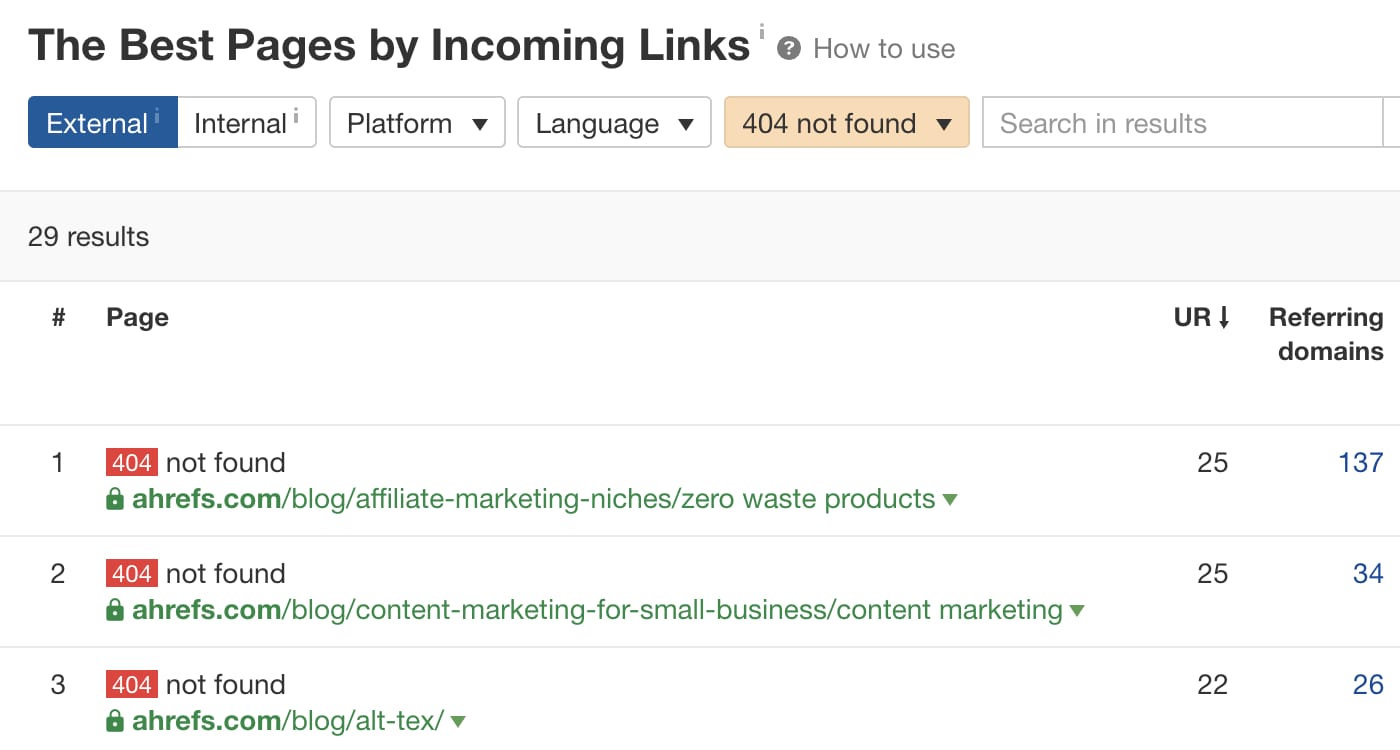
Find issues in site maps
Listing the pages on sitemaps is essential as it helps index the pages. Things like redirecting, dead pages or non-canonicals should not be listed as it sends mixed signals to Google. You must sitemap the pages you want to index and find the issues with inserting pages in sitemaps.
You can use the Google search console to find the issues in the sitemaps and solve the problems.
Check on-page elements
You need to insert on-page elements on the websites. The elements are H1tag, meta description, and title tags. These elements help Google understand your content and help you get more clicks by ranking the page on Google.
To check the missing on-page elements, head to the Issue tab in the content report at the site audit.
Also Read: White Label SEO Services
Check off-page elements
Off-page SEO is a process of taking actions outside the websites to rank the websites on search engines. The elements of off-page are link-building, local SEO, influencer marketing, and more. The off-page checklist is to audit backlinks, analyze competitors’ links, build high-quality links, and optimize for local SEO.
Find declining content to reclaim rankings
When your content becomes outdated, the traffic on pages will drop off. But you can rank the content again by updating it.
Are you willing to know how to find declined content in the Google search console?
- Go to search results reports
- Set data filter to compare mode
- Choose to compare the last 6 months content
- Click on the Pages tab
- Sort tables with click differences from low to high
Find competitor keywords
Content gaps arise when your competitor’s website ranks for keywords you are not using in your content. Finding the keywords manual takes a lot of time.
The tool you can use to find content gaps is Uber-suggests. It is a free and paid SEO tool to find content gaps. The content gaps are through keyword research, competitor analysis, and SEO audit. Once you find content gaps from the competitor, you can use them for your websites.
Find Missing backlink opportunities
When you have to find a backlink opportunity, use the backlink gap tool. To use this tool, enter your domain and four competitors’ domains and click on find prospects. The tool will show domains that link to competitors’ pages, not to your page. In such a way you find missing backlink opportunities.
Which Tools Should You Consider For An SEO Audit?
According to our research and experience, we recommend following 4 tools that you should use to perform basic to advanced website audit for SEO purposes.
Google Search Console
The Google Search Console tool helps troubleshoot and monitor website presence issues on Google. It is a free tool that allows you to understand how Google sees your site and helps improve its ranking.
Google Analytics
Google Analytics analyzes website performance, traffic trends, and content engagements. It is a free tool that helps analyze website performance and provide SEO reports to improve SEO traffic and fix issues in the SEO.
Semrush
It is an all-one SEO tool that comprehensively summarizes the website’s performance and helps you improve the website in all crucial areas of SEO. Semrush is a paid tool that allows you to get a Pro and Guru services trial.
PageSpeed Insights by Google
Google PageSpeed Insights is a free tool that analyzes the performance of web pages on mobile and desktop. Also, it provides metrics to assess the quality of user experiences. The tool gives a score between 0 and 100. A higher score means the page is optimized for speed and efficiency.
How does Digi Glide help with SEO audits?
Now, you have a complete SEO audit checklist with 15 steps. It will help you optimize the website according to the latest Google algorithms and industry standards.
Perform extensive SEO audit on your site with above 15 point checklist and make necessary changes in your site to improve overall ranking and increase organic traffic.
Lastly, when you don’t have time or you find it tough to perform a detailed SEO audit, Digi Tech Glide is at your disposal. Our team of SEO experts will do it for you and you can focus on the core strengths of your business. Contact us to get the audit and customized SEO services.
Frequently Asked Questions
Why are SEO audit checklists necessary?
SEO audit checklists are necessary to improve website performance and search optimizations. Also, it needs to be implemented regularly for long-term success of the website performance.
Can I execute the 15-step SEO audit checklist independently, or should I hire a professional?
Yes, you can use a 15-step SEO audit checklist for your website without taking professional help. Also, you will need audit tools to work on the checklist. If you are not able to analyze the website, the better option is to hire SEO agency like us.
Will this SEO audit checklist remain effective when search engine algorithms change?
Yes, the SEO audit checklist is adaptable as you focus on core elements that impact search engine rankings. Adaptability helps you improve websites.
Are the steps in this SEO audit checklist applicable to any type of website?
Yes, the SEO audit checklist is applicable to all websites and industries. It is useful for different content. However, you need to customize your business needs and SEO goals.
How frequently should I use the SEO audit checklist?
The SEO audits must occur quarterly, monthly, or weekly. These audits provide information on current search engine algorithms and industry practices.

